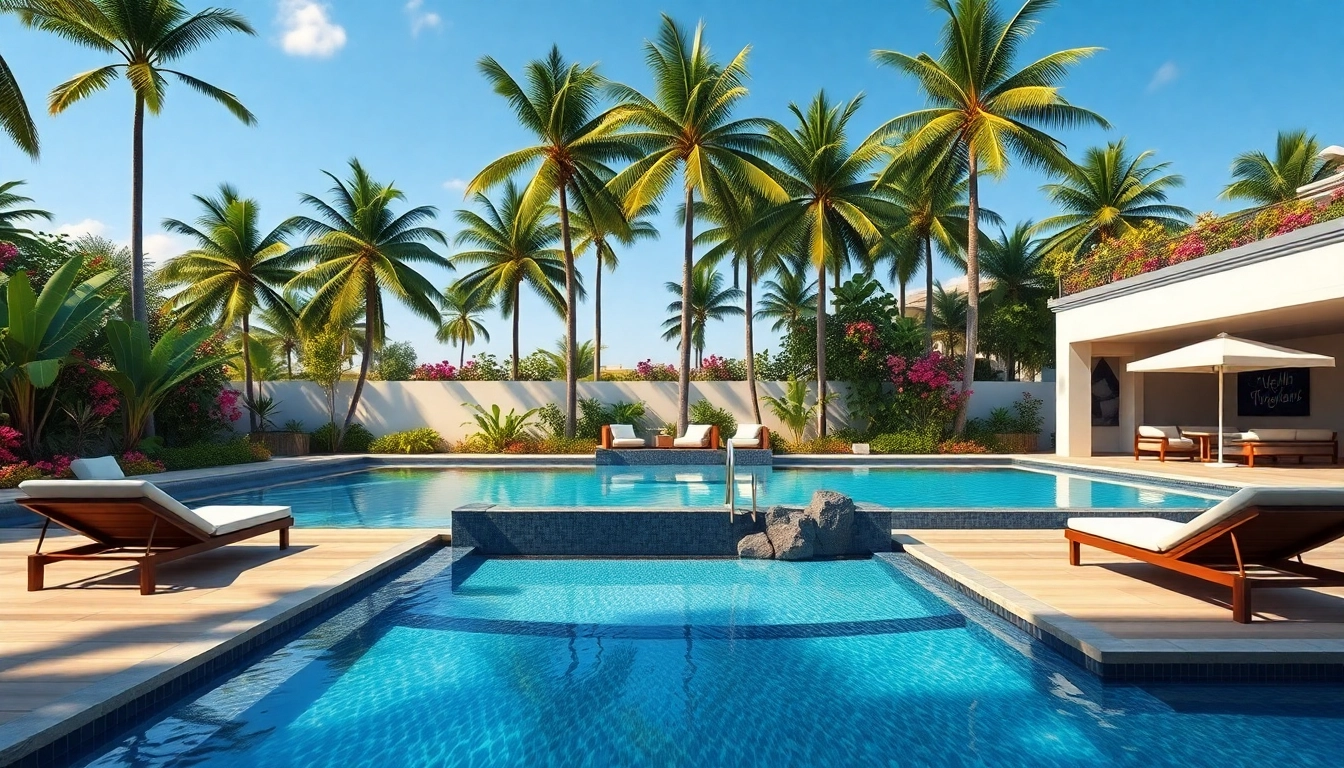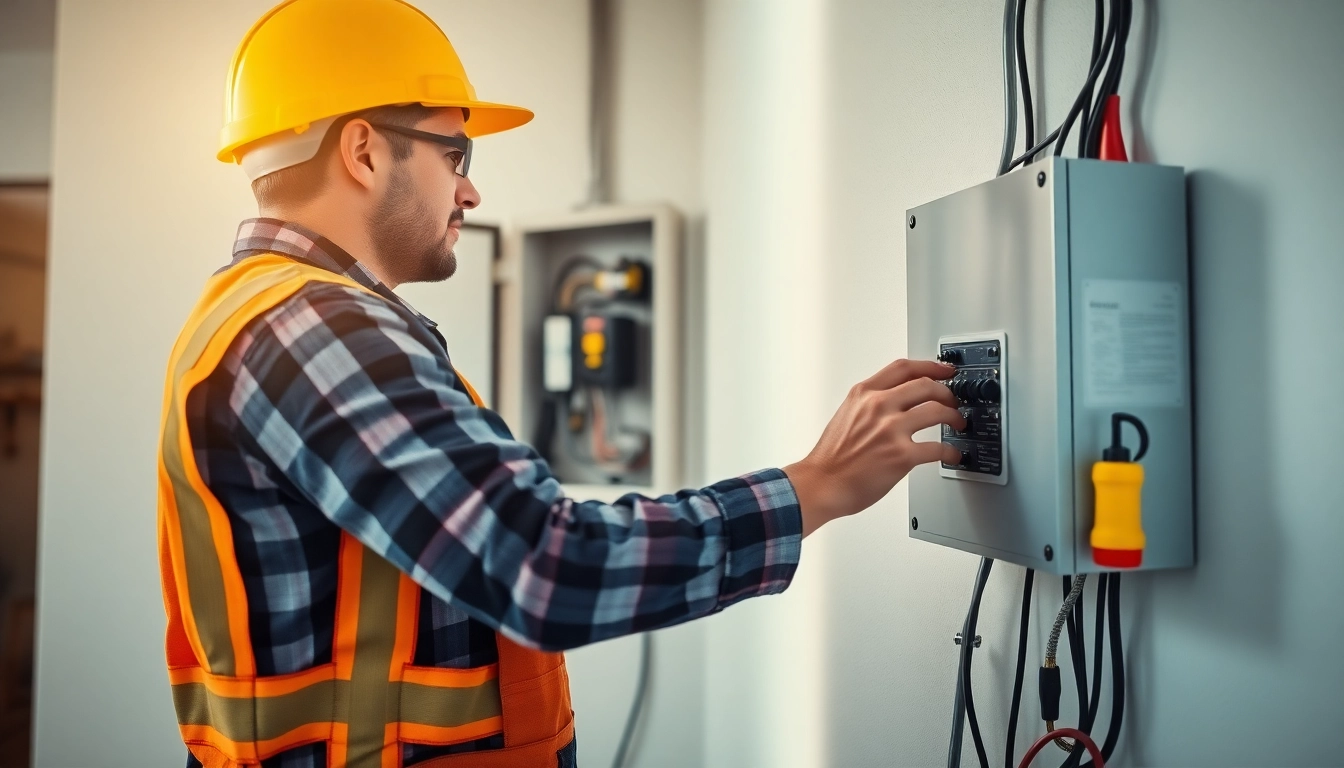Understanding Custom Pool Options
Exploring the beauty and functionality of a custom pool can transform your outdoor living space into a haven of relaxation and fun. Custom pools are designed specifically to meet the aesthetic desires and spatial constraints of your landscape while offering unmatched personalization. As many homeowners embark on this journey of crafting their ideal backyard oasis, understanding different options and considerations is crucial to making informed decisions. In this section, we will delve into the various types of custom pools available, the essential features to consider, and guidance on selecting the right materials.
Types of Custom Pools
When it comes to custom pools, variety is one of the key selling points. Each type has unique characteristics, benefits, and aesthetics that can influence your decision. Here are the most common types of custom pools:
- In-Ground Pools: These are the most popular type, offering a permanent solution that can be tailored to any shape or size. They can be made of concrete, fiberglass, or vinyl and can accommodate a range of design features.
- Above-Ground Pools: These pools are typically more budget-friendly and easier to install than in-ground options, but generally offer fewer customization features. They can be aesthetically enhanced through decking and landscaping.
- Infinity Pools: Known for their stunning visual effects, infinity pools create a vanishing edge that blends seamlessly with the horizon, perfect for scenic views.
- Plunge Pools: Ideal for smaller spaces, plunge pools provide a refreshing retreat without taking up significant yard space. They are often designed with various additional features like jets and lights.
Key Features to Consider
Custom pools offer a plethora of features that can enhance both visual appeal and user experience. It’s important to prioritize which features align with your lifestyle interests and backyard design:
- Shape and Size: The shape can define the style of your pool area. Consider whether a geometric, freeform, or naturalistic design aligns with your vision.
- Heating Options: Adding heating allows for year-round use, especially in cooler climates, enhancing the pool’s usability.
- Energy Efficiency: Opting for energy-efficient pumps and lighting can significantly reduce operational costs.
- Pool Covers: This not only enhances safety but also reduces cleaning and maintenance while extending the life of your pool.
Choosing the Right Materials
The materials you choose for your custom pool significantly impact durability, aesthetics, and maintenance. Here’s a breakdown of the most popular options:
- Concrete: Highly customizable, concrete pools can be shaped into virtually any design. Delivering durability and a classic look, concrete pools require higher long-term maintenance.
- Fiberglass: Faster to install and more resistant to algae growth, fiberglass pools come in pre-molded shapes, making them less customizable but easier to maintain.
- Vinyl: Available in a variety of shapes, vinyl-lined pools are economical and easy to install, but they do require liner replacement every 7 to 15 years.
Design Elements of Custom Pools
Designing a custom pool entails not only the pool’s structure but also incorporating elements that enhance its overall experience. From alluring water features to captivating lighting design and harmonious landscaping, each aspect plays a crucial role in achieving your desired outdoor haven.
Incorporating Water Features
Water features can elevate the beauty and ambiance of your custom pool, adding tranquility and a sense of luxury. Here are some popular options:
- Waterfalls: A stunning feature that mimics natural landscapes, creating soothing sounds and a refreshing aesthetic.
- Fountains: These can range from simple jet fountains to elaborate designs that serve as focal points in your pool area.
- Spas: Integrating a spa adjacent to or within your pool can enhance relaxation and offer therapeutic benefits.
Lighting and Ambiance
Lighting transforms your pool area into a multi-functional space that can be enjoyed day or night. Consider these options when designing the lighting:
- Underwater Lighting: LEDs installed beneath the water surface provide safety and aesthetics, enhancing the pool’s visual appeal during evening swims.
- Surrounding Landscape Lighting: Strategically placed lights around the pool area can highlight landscaping features and create an inviting atmosphere.
- Remote-Controlled Features: Incorporating smart technology allows you to control your lighting for mood settings with ease.
Landscaping and Surroundings
Effective landscaping harmonizes your pool with its environment. Here are some elements to consider:
- Walkways and Decking: Create functional entertainment areas with materials that blend seamlessly with your pool design, such as natural stone or composite decking.
- Plants and Foliage: Incorporate native flora around your pool for a vibrant and inviting space, ensuring that the plant types are non-invasive and pool-friendly.
- Shading Solutions: Consider elements like pergolas or umbrellas to provide shade, enhancing comfort and usability during hot summer days.
Budgeting for Your Custom Pool Project
Creating a custom pool is a substantial investment, and establishing a realistic budget early on is essential for managing expenses effectively. With various factors influencing the cost, let’s discuss how to estimate expenses, explore financing options, and learn strategies for reducing long-term costs.
Estimating Costs
Costs can significantly vary based on design, materials, size, and additional features. Here are some key components that contribute to the overall cost:
- Construction Materials: The choice between concrete, vinyl, and fiberglass can impact expenses substantially.
- Labor Costs: Hiring experienced contractors may cost more initially, but their expertise can save you money on repairs and revisions down the line.
- Permits and Inspections: Local regulations often require specific permits that can add to upfront costs.
- Additional Features: Water features, lighting, and landscaping can significantly influence the final price. Consider your priorities to allocate your budget effectively.
Financing Options Available
Financing provides flexibility for homeowners looking to invest in a custom pool without overwhelming their immediate budget. Here are common options:
- Home Equity Loans: Utilizing your home’s equity can provide lower interest rates while allowing you to access the necessary funds.
- Personal Loans: Unsecured loans can be available through banks or credit unions. Ensure to review interest rates and payment terms carefully.
- Pool Financing Companies: Specialized lenders offer tailored financing options for pool installations, often with flexible payment plans.
Reducing Long-term Expenses
Long-term expenses can add up quickly if not appropriately managed. To optimize the cost of ownership for your custom pool, consider these strategies:
- Invest in Energy-efficient Equipment: Opt for variable-speed pumps and LED lighting that use less energy while providing effective performance.
- Regular Maintenance: Establish a consistent maintenance schedule to prevent costly repairs and prolong the life of your pool.
- DIY Maintenance: Educate yourself on essential tasks that you can perform yourself, like skimming and vacuuming, to reduce service expenses.
Installation Process of Custom Pools
The successful installation of your custom pool is grounded in careful planning and execution. Understanding the process will help ensure that the project runs smoothly and adheres to all necessary regulations.
Choosing a Reputable Contractor
Finding the right contractor is critical to your project’s outcome. Here are steps to ensure you make the best choice:
- Research and Reviews: Check online reviews and ask for references to gauge the contractor’s past work and customer satisfaction.
- Check Qualifications: Ensure your contractor is licensed and insured, which protects you in the event of accidents or defects.
- Get Multiple Quotes: Comparing multiple estimates helps you understand the market rates and gives you leverage in negotiations.
Timeline Expectations
The timeline for your custom pool installation can vary widely, factoring in design complexity, weather conditions, and contractor availability. Be prepared for the following phases:
- Design and Planning: This phase may take several weeks, depending on design iterations and obtaining approvals.
- Construction: Typically, the building of your pool can take anywhere from a few weeks to several months, depending on the size and materials selected.
- Finishing Touches: Landscaping and surrounding features can add extra time after the pool shell is completed.
Permits and Regulations
Before you proceed with your custom pool, it’s vital to navigate through local regulations and permit requirements:
- Local Codes: Ensure you understand construction regulations, as non-compliance can lead to costly fines.
- Zoning Laws: Confirm that your property can accommodate a pool based on zoning rules, which can stipulate setback distances from property lines.
- Safety Regulations: Familiarize yourself with safety measures, such as fencing and pool alarms, which may be mandated in your area.
Maintaining Your Custom Pool
A custom pool requires regular maintenance to ensure it remains a safe and inviting space for family and friends. Here, we will discuss necessary maintenance practices and how to prepare for different seasons.
Regular Maintenance Tips
Consistent upkeep keeps your pool in top condition. Some essential maintenance practices include:
- Water Testing: Regularly check your water chemistry for pH, chlorine, and alkalinity levels to maintain safe swimming conditions.
- Skimming and Vacuuming: Remove debris from the water surface and pool floor to prevent algae growth and equipment blocks.
- Filter Cleaning: Keep your pool filter clean and functioning to ensure proper circulation and prevent system strain.
Seasonal Care Practices
Each season brings unique challenges for pool upkeep. Here’s how to adjust your maintenance routine accordingly:
- Spring Cleaning: Prepare your pool for use by conducting a thorough cleaning, balancing the water chemistry, and ensuring all equipment is functioning correctly.
- Summer Maintenance: Regularly check chemical levels and increase monitoring frequency as usage typically spikes during summer months.
- Winterization: A proper winterization process includes draining lines, covering the pool, and considering a maintenance plan for colder temperatures.
Common Pool Repairs
Even with diligent maintenance, repairs may occasionally be necessary. Familiarize yourself with common issues:
- Cracks in Pool Walls or Bottom: These can result from structural movement and require professional assessment and repair.
- Leaky Skimmers or Returns: Address leaking fittings quickly to protect your pool’s integrity and minimize chemical loss.
- Pump Failure: Regularly check your pump’s functionality and seek immediate repair if there are signs of struggle or inefficiency.


